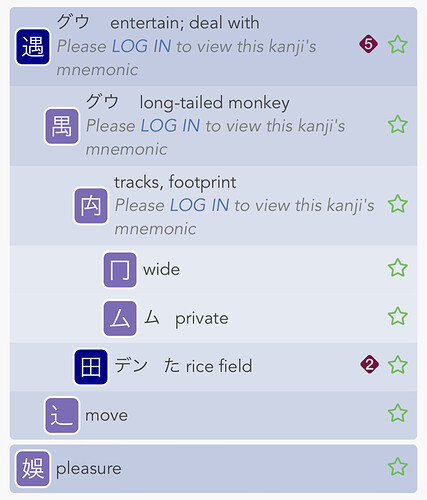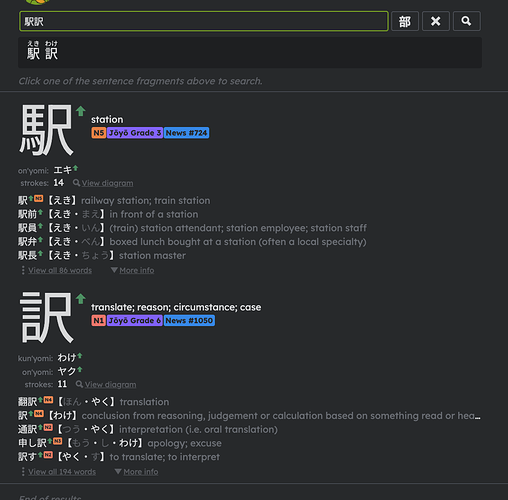Hello,
I have around ~2900 Young+Mature cards in my Anki decks, so not really an expert, but what I started to notice is that with Kanjis, sometimes you have to “re-learn” previous one when you meet new one that are very lookalike or have different readings in differents words.
But the first thing to point out is that how I learnt vocabulary was by the “path of least resistance”. If I encounter 駅 and I see that big R shape on the right, if it’s the only word I know with it, I just remember it as it is. In this example “Big R = station”. If I encounter something else later, let’s say 訳, only then I start to look at the left part.
So it means I’m completely at the opposite of RTK, I create my decision branch on the minimal amount of information necessary, then only I add up things.
So it means, when I see new cards or I confuse 2 cards, for example those two 駅 and 訳, then only I wrote those 2 side by side in Jisho (Lorenzi’s Jisho) and only then I check what can I use to differentiate them.
I do the same for readings. I remember 生命 that 命 is めい、so if there is another reading like いのち only then I check the list of readings.
However, what I changed in my way of doing things, is how I add words in my deck. Let say I encounter 生命倫理 (bio ethics). Before I would just add it. Now I add 生,命、理、生命、倫理、生命倫理. It takes a minimal amount of time with Yomitan because you just have to over different part of the word and scroll a bit for each.
but the really good thing is that it groups forme the learning of the different readings. In that case for example, I’d have the いのち and めい of 命 covered right away, which helps a lot because if you only know one very well, starting to learn the other one down the line might be more difficult.
Also helps a lot to learn how some compound work. 人物、動物、植物、生物 will really help you remember ぶつ, will help your retention because every word is not 100% different, you can re-use your learning of some easy one like じん for 人、せい for 生, and it helps adding more new words per day 
Also, I now Gather the new cards by descending order, which means I’m not doing old words added 6 months ago, I review fresh one, which mean my retention will be better for those, and for those that are 6 months old, I don’t have any benefit doing them now or in 3 months.
But still, it means more paperwork (hypertts, deepl translation …) to generate metadata for the new one every day, but it really helped me going from 7-8 new words per day to 20 without dropping retention.




